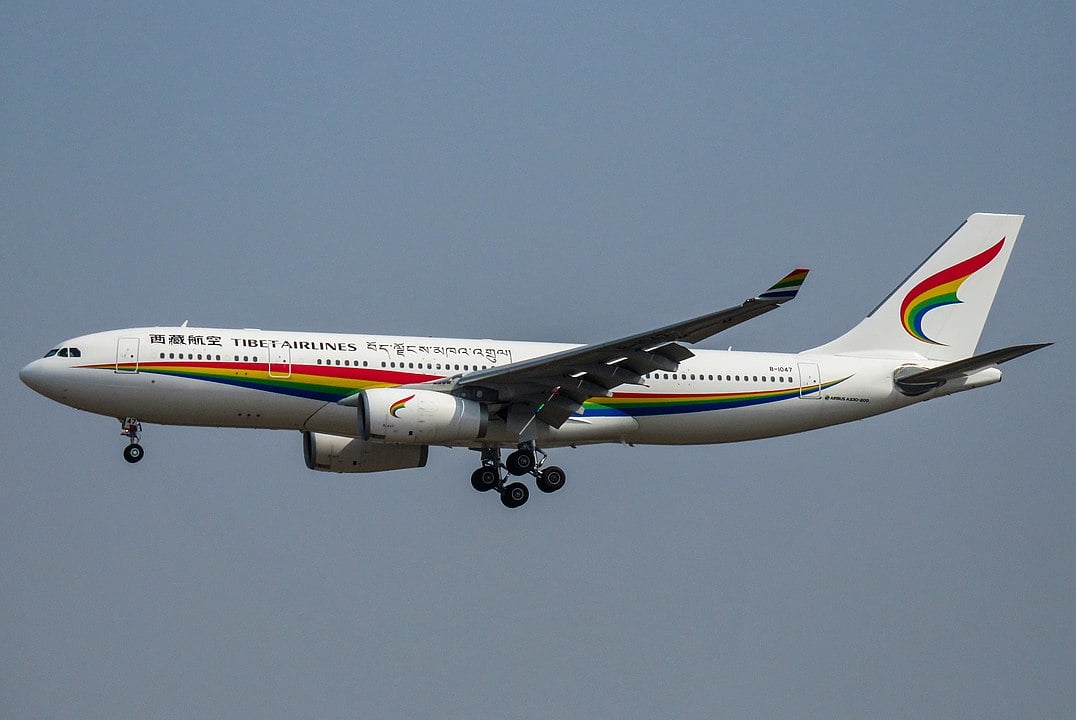
When airlines plan their routes for long trips to Asia, they avoid flying over Tibet in China despite this autonomous region’s vast size. It’s a curious thing that catches people’s attention and causes people to wonder about this.
Tibet is located on the Tibetan Plateau and is mostly made up of mountains with very few people actually living there. The average height above sea level is more than 4,500 meters.
Because there aren’t many people living there, there also aren’t many flights going to or from the region. To put this into perspective, only about 0.2 percent of China’s population resides in the area.
Still, there are a couple of international airports in the region, such as the one in Lhasa. Flights mostly go to other parts of China or nearby areas instead. Tibet Airlines is the main airline operating in this region.
Airlines flying to or from different places usually avoid flying over Tibet although it could be the shortest route. Usually, the FlightRadar24 images show that there are no flights over Tibet. Instead, you’ll see several airplanes flying just north and south of the region.
1. High terrain of Tibet
A major reason why aircraft avoid flying over Tibet is because of its high terrain. The average height of this area is over 14,000 feet.
While airplanes usually fly higher than this, safety procedures dictate that in case of an emergency, such as cabin depressurization, they need to descend to 10,000 feet before diverting to an airport.
There are four reasons why airlines don’t fly over Tibet, and they are all quite peculiar.
pic.twitter.com/KvvnzkuCEL
— Interesting Engineering (@IntEngineering) October 29, 2019
However, with such high terrain in Tibet, airplanes might not be able to descend quickly enough. Even though there’s oxygen for passengers, it’s limited and assumes the airplane will rapidly reach a safe altitude.
Moreover, there aren’t many alternative airports for emergency landings. Airlines choose to steer clear of Tibet altogether to avoid situations where they can’t descend fast enough.
2. Risk of increased turbulence
During a flight, turbulence occurs when air currents move up and down unevenly and at various speeds. Several factors contribute to this, such as the heating effect of the sun, weather conditions, and even mountains. When air flows over mountains, it can cause turbulence by creating disruptions in the airflow.
While turbulence can occur on any flight route, it’s more likely and challenging to avoid in high mountainous regions like Tibet. This turbulence can be unsettling for passengers and could potentially worsen an emergency situation, making it even more dangerous.
3. Risk of jet fuel freezing
Another reason linked to the mountainous terrain is the lower temperatures, which increase the risk of jet fuel freezing. Standard Jet A1 fuel freezes at -47 degrees Celsius, while Jet A, more common in the US, freezes at around -40 degrees.
Although such extreme temperatures are uncommon, especially for extended periods, flying at high altitudes over already cold mountains raises the risk, as reported by Simple Flying.
Source: http://greece.greekreporter.com/category/greek-news/tourism/